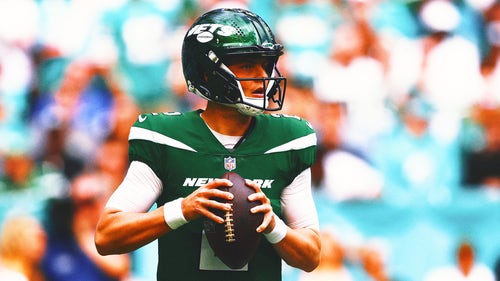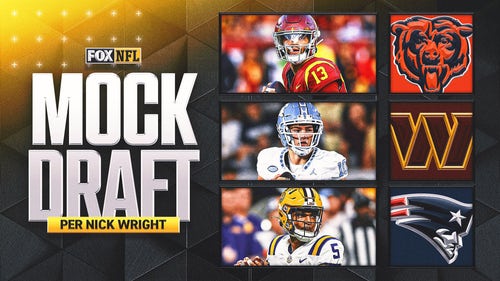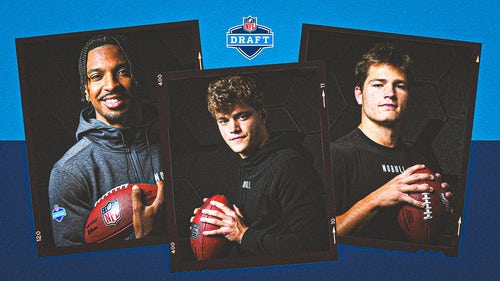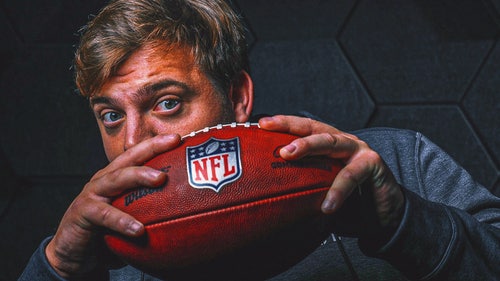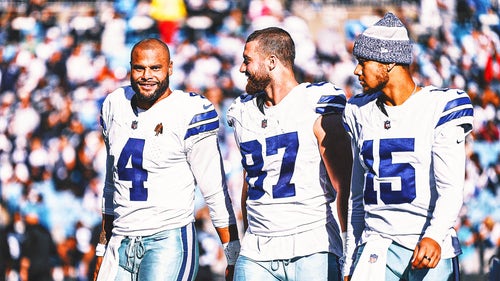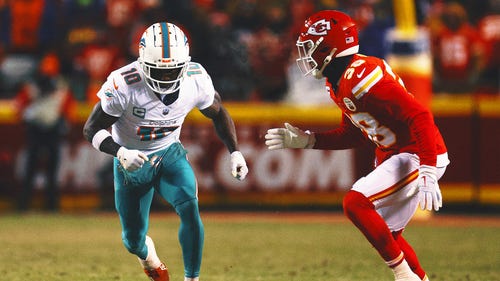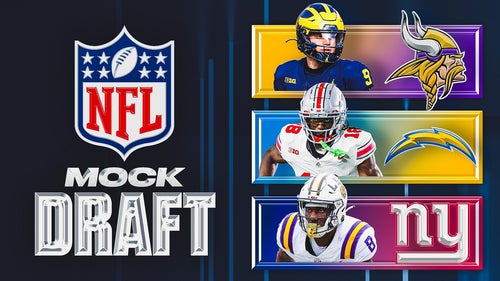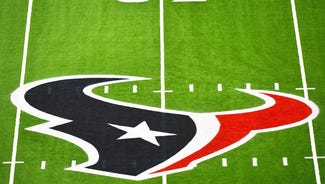
Helmet-to-helmet hits mar Week 6
I am really bothered by the number of helmet-to-helmet hits we saw in Week 6 and the subsequent concussions that were caused as a result of those hits. Some of them were legal, and some were unavoidable. But, plain and simple, they are cheap shots, and the league needs to deal with this immediately.
There were four plays that come to mind — in particular a hit on Philadelphia's DeSean Jackson and another on Baltimore's Todd Heap, but I'll get into more depth on those in a minute.
There also was a helmet-to-helmet hit in the Lions-Giants game, in which Detroit's Zack Follett went down with what looked to be a head/neck injury and was carted off the field after sustaining a blow from Giants defensive end Jason Pierre-Paul on a kickoff.
This one was not a foul because Follett, who was pursuing the runner, is not considered defenseless on that play. Yet the result of the helmet-to-helmet contact was a serious injury.
Finally, Pittsburgh's James Harrison drilled Cleveland's Josh Cribbs just after Cribbs caught a pass and was about to be tackled by LaMarr Woodley. Harrison took a shot to Cribbs' head/neck area and Cribbs was out for the rest of the game.
The NFL will look at all of these plays to determine whether these or any other hits involving the head or neck area can be legislated out of the game. It has already looked at a runner leading with his helmet and a defender tackling a runner by leading with his helmet.
These acts are illegal in college and no doubt will be further studied by the NFL.
Now let's discuss the top plays of the weekend.
1. Atlanta at Philadelphia
THE SITUATION: Philadelphia led 14-0 in the second quarter, with the ball third-and-6 at the Atlanta 32.
THE PLAY: Kevin Kolb's pass to DeSean Jackson fell incomplete, but Jackson took a vicious hit from Atlanta cornerback Dunta Robinson. Unnecessary roughness was ruled on Robinson, and both Robinson and Jackson were injured.
MY TAKE: This is a real tough play for a defender going full speed at the receiver. Robinson didn't launch, but he did lower his head and made contact on what appeared to be on the left shoulder.
Jackson is considered defenseless as the pass was incomplete, and as a defender, Robinson is not allowed to lower his head and contact Jackson anywhere on his body. I'm not sure what you tell a defender to do in that situation, but we have to avoid these types of hits that create the injuries that result from them. The NFL will continue to look at these types of actions to try to eliminate these injuries. Robinson and others are going to have to lead with their shoulders and not their heads.
2. Baltimore at New England
THE SITUATION: Baltimore led 10-7 in the second quarter, with the ball second-and-7 at its 23.
THE PLAY: Quarterback Joe Flacco's pass to Todd Heap was incomplete, but another bad hit to the head by New England's Brandon Meriweather was called and the Patriots were penalized 15 yards for a personal foul.
MY TAKE: While I can sympathize with Robinson in the previous play, I cannot muster any kind of sympathy for Meriweather. This is another cheap shot, and, in my mind, worse than the hit Cleveland's T.J. Ward put on Cincinnati's Jordan Shipley two weeks ago, and Ward was fined $15,000.
Meriweather clearly launched and went helmet-to-helmet against Heap, and Heap was injured on the play. At least Ward did not launch. This type of hit is totally avoidable, and another message needs to be sent by the league to all players, forcing them to realize this type of contact is not acceptable. I look for a big fine to come from the league against Meriweather.
3. Dallas at Minnesota
THE SITUATION: With no score, Dallas had the ball third-and-6 at the Minnesota 15-yard line.
THE PLAY: Dallas quarterback Tony Romo passed 15 yards to Roy Williams for a touchdown. Miles Austin of the Cowboys was then called for a 15-yard unsportsmanlike conduct penalty for leaping over Williams.
MY TAKE: Can we please stop this nonsense? There is no reason for this to be a foul.
Austin jumped over Williams and a couple of players held up fingers, but nothing was prolonged or choreographed and neither player went to the ground. The league has done a good job of cleaning up most of the egregious demonstrations, but now it is going too far.
As long as it’s spontaneous, let the players celebrate. This is two weeks in a row, in my mind, when calls were made against the Cowboys that should not have been called. If the NFL doesn't want to be called the "No Fun League," then it needs to use some logic and not make these calls unless it is something that clearly demonstrates a lack of good sportsmanship.
I would say that if there is a question as to whether something like this is a foul, don't call it. It will just bring added criticism.
4. New Orleans at Tampa Bay
THE SITUATION: Tampa Bay trailed 24-0 early in the fourth quarter, with the ball second-and-5 at the New Orleans 29.
THE PLAY: Tampa Bay quarterback Josh Freeman passed 3 yards to Sammie Stroughter, who fumbled and the ball was recovered by New Orleans cornerback Malcolm Jenkins. Tampa Bay challenged that the runner was down by contact, and the play was reversed.
MY TAKE: Interesting replay scenario in that Tampa Bay challenged that Stroughter was down by contact before the fumble. While referee Clete Blakeman was under the hood, he noticed that the pass was incomplete, and therefore the ruling of down by contact was irrelevant.
Once you are in replay, every aspect of the play that is reviewable can be looked at and considered. The Bucs won the challenge, even though the reversal was not for what was originally challenged.
5. Seattle at Chicago
THE SITUATION: Seattle led 16-13 with a little over 10 minutes to play in the third quarter, with the ball third-and-11 at its 36.
THE PLAY: Seattle quarterback Matt Hasselbeck passed incomplete to Leon Washington on what appeared to be a fumble.
MY TAKE: This originally looked like the “Tuck Play” revisited. The ball came out at some point after Hasselbeck was tucking the ball back to his body. Chicago decided not to challenge, and that was a good decision.
Hasselbeck's arm stopped going forward, and he then shoved the ball forward in an attempt to throw a pass. The ball came out after the arm started forward. The act of tucking the ball back into his body is deemed to be over when the quarterback's arm stops and restarts forward in an attempt to throw a pass.






































































































































